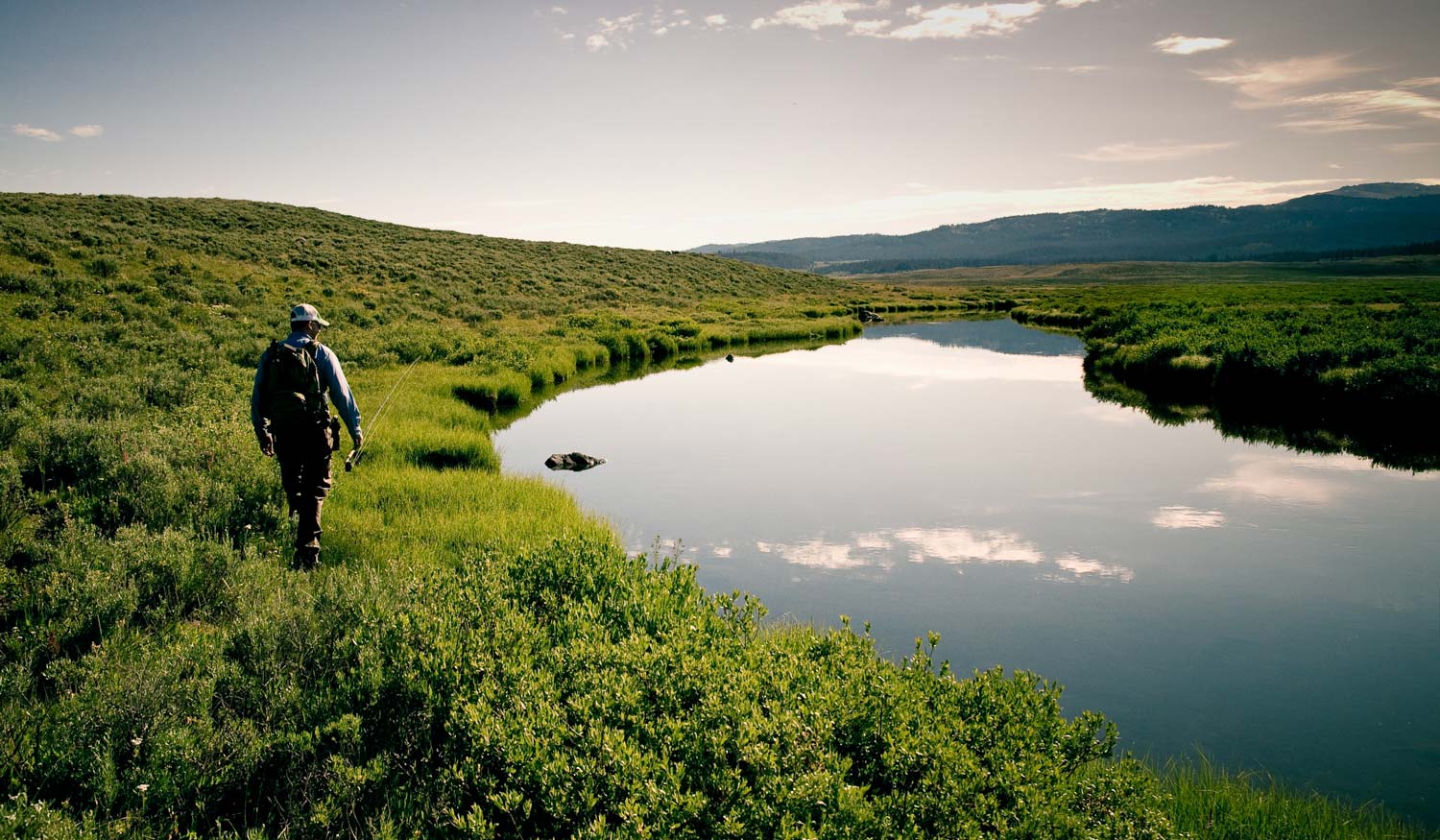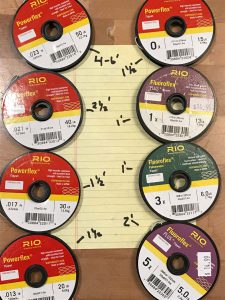
Flat Water and Spooky Fish Mean Long Leaders Photo Louis Cahill
By Louis Cahill
There are some big advantages to fly-fishing with a long leader, if you can turn it over.
Long leaders, up to eighteen feet in some cases, can be a huge help when targeting spooky trout or species like carp and bonefish. There’s a definite advantage to having some extra stealth, but only if you can turn that leader over. If you can’t, you loose the ability to deliver the fly accurately and with a clean presentation.
Most anglers struggle to turn over long leaders. Sometimes that’s a casting problem, but often it’s just an issue with the leader. Understanding how a leader works, and how to build one properly can really take your fly fishing to the next level, letting you catch fish you may have considered above your pay-grade.
Generally anglers will start off with a fairly standard nine foot leader, and lengthen it when they feel they need to. There’s nothing wrong with that, if you do it right. But if you know you are going to be using a long leader all day, I recommend you start from scratch and build a leader that’s right for the conditions. I change my leaders like I change my socks and I’ll take things like wind and light into consideration when I build them. I like having every advantage.
If you want to learn more about building custom leaders, read my article about Understanding Leaders.
Today, I’m going to talk about how to make an effective long leader starting with a standard leader, whether it’s one you tied or bought at the shop. I will suggest that you tie your own leaders. If you do it right, they will always perform better.
Most anglers will lengthen their leader by adding a long section of tippet. Unless you are doing some kind of technical nymphing, where you want thin tippet that cuts quickly through the water column and gets your flies deep in a hurry, lengthening your tippet is the worst possible way to add to your leader. It is the easiest method, and like most shortcuts, yields the worst results.
Good leaders are designed to transfer energy evenly. Tippet is designed to dissipate energy. That’s important for a good dead drift but bad for turning over a fly. In lengths longer than about two feet, tippet is a liability, from a casting perspective.
What’s important for energy transfer is not the break strength of the leader material but its diameter and stiffness.

A Good Formula
For good even transfer, you want each section of leader to step down in size by about 3 or 4/1000 of an inch. My typical nine foot trout leader has a butt section of 40lb material with a diameter of .021”. I then step down to .017”, then .013” and so on. By the time I’m down to 5X tippet I’m at .006”. A store bought leader will be similar.
If you think about the energy transfer, you can see how adding tippet to make your leader 14, 16 or even 18 feet long is a recipe for disaster. The best way to do it is to add to the butt section of the leader. If, for example, you cut the loop knot off of the butt of your leader and add 5 feet of 50 pound material with a diameter of .023”, you now have a leader that is 15 feet long but turns over with much more power. Add 3 feet of .023 material and 4 feet of .026 material, and you’re up to 18 feet.
Long leaders, even when tied correctly, are still more challenging to fish. Nothing will show off problems in your cast like a long leader. These formulas are a great place to start, but if you are struggling with long leaders, a little casting instruction and practice are likely the answer. If you have a good clean cast, there is no reason you can’t effectively fish really long leaders, as long as they are tied well.
I hope this helps put you on some spooky fish!
Louis Cahill Gink & Gasoline www.ginkandgasoline.com hookups@ginkandgasoline.com Sign Up For Our Weekly Newsletter!
This is a great point and a great article. And just in time, as midges have really woke up around here. Im not sure why it never crossed my mind to add longer, heavier leader in the butt to get more length. when half your leader ends up beinig 7x, weird things happen. this makes perfect sense. Thanks!
I’m assuming you’re casting heavier lines as a rule. You wouldn’t suggest those butt diams for 4 or 5 wts would you? Aren’t they stiffer than the actual fly line?
Art
Leader Formula for Saltwater…Google -Bruce Chard, Bonefish formula….his whole theory is based on step down in sizes…Great Article, never thought about just adding to the butt end…I have always had a 12′ made up, about the longest I can handle…
Pingback: Tippets: Simple Fly Fishing, Managing Long Leaders | MidCurrent
Great article. I naked fly fish for chronomids on stillwater that is shallow and very clear using a store bought 13ft. tapered leader ending at 4x, and tried to cure the long leader problem by adding more 5x and 6x tippit to obtain a 20ft. leader. WRONG At 2ft per 5x and 6x that will only give me a 17ft. leader. I’ll add 3ft. of butt section and see how the casting goes. Thanks
I have to admit, I’m curious about this naked fly fishing.
It’s fishing without an indicator.I first heard the term in BC, where it’s done a lot, using a 22ft. to 25ft. leader/tippit, Most of the time it’s used with a chironomid fly. I watched a fly fisherman on Pass lake in BC, using this method out fish all of the other indicator fishermen. You put enough line on the water, along with the leader to make a couple of roll casts to get everything airborne.